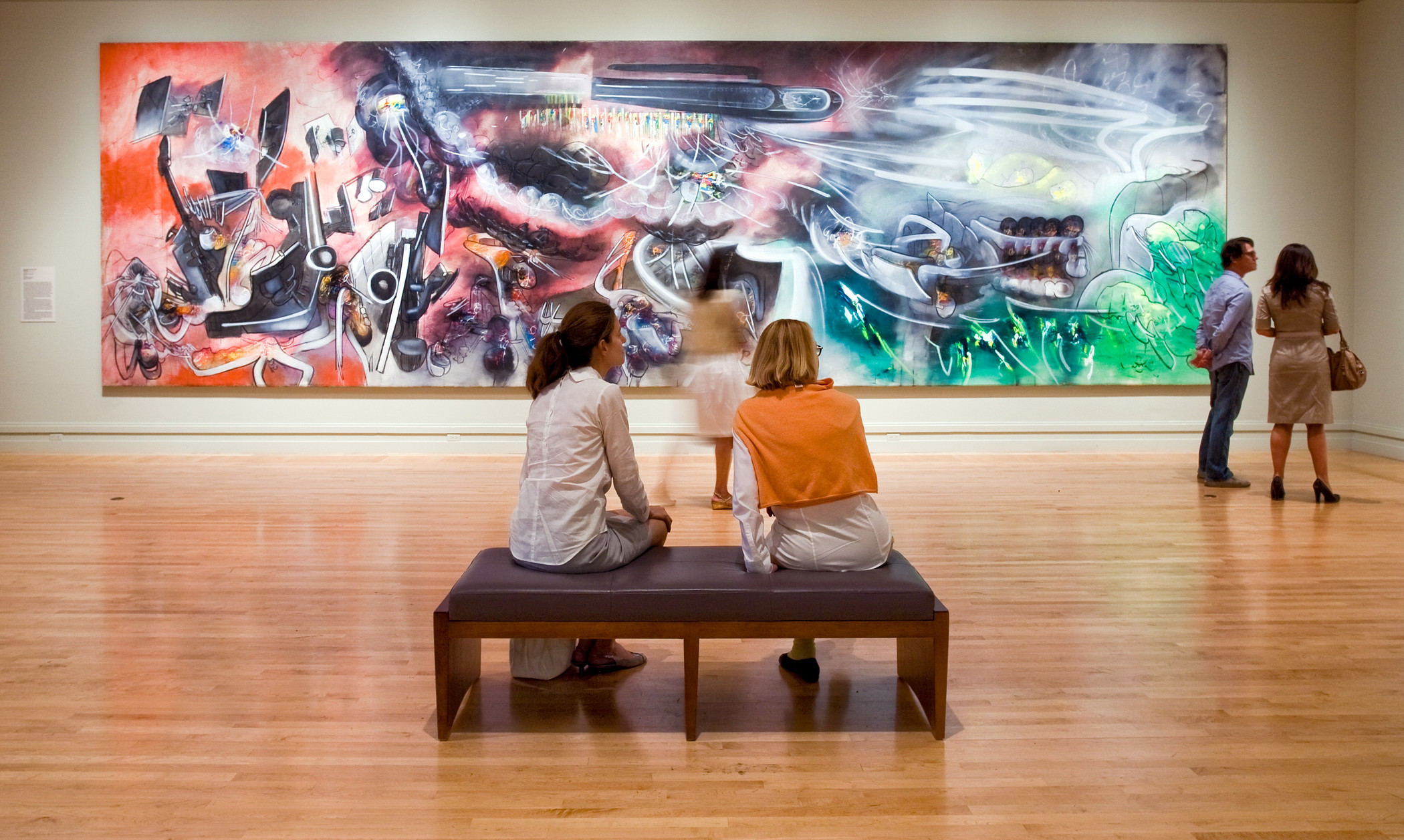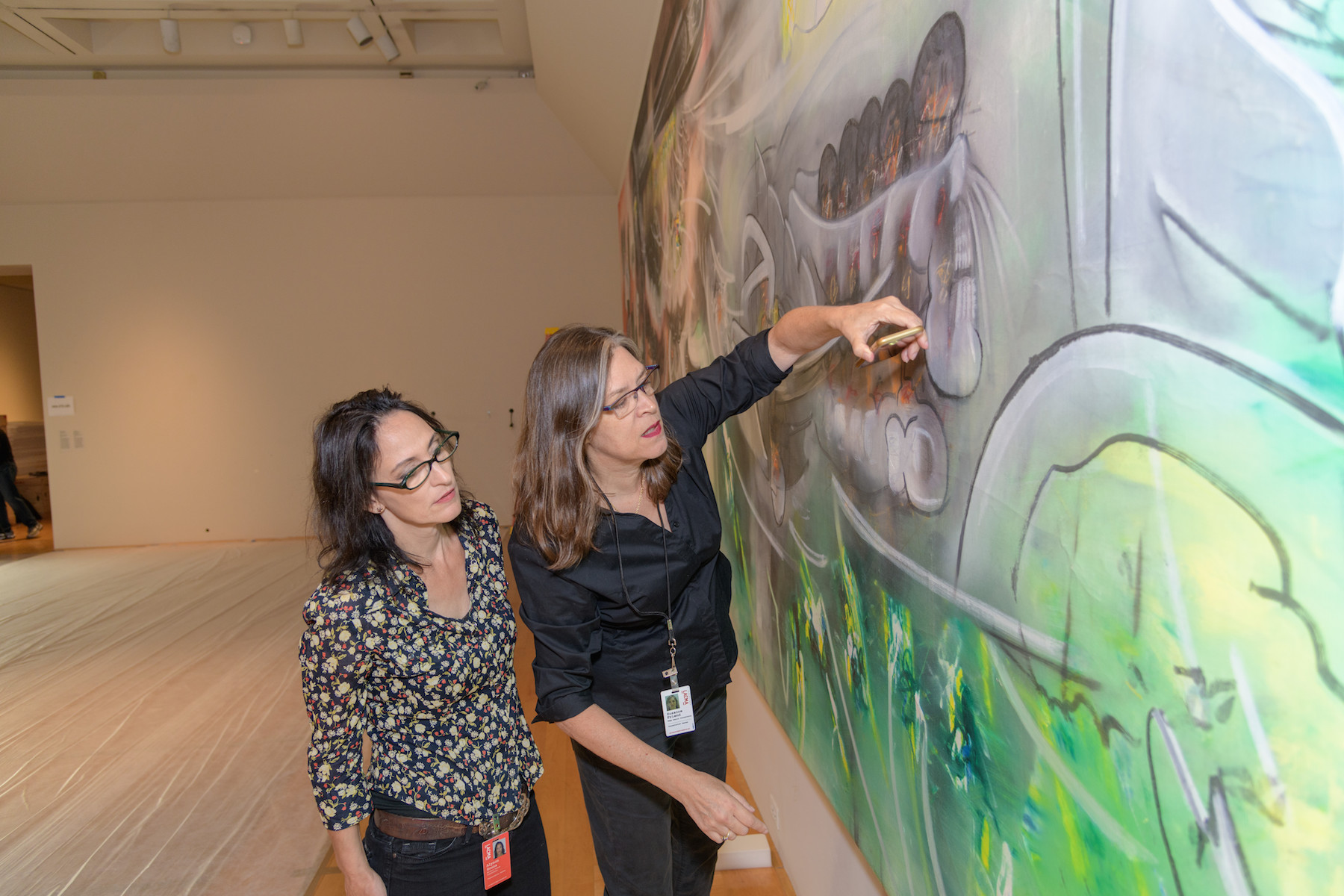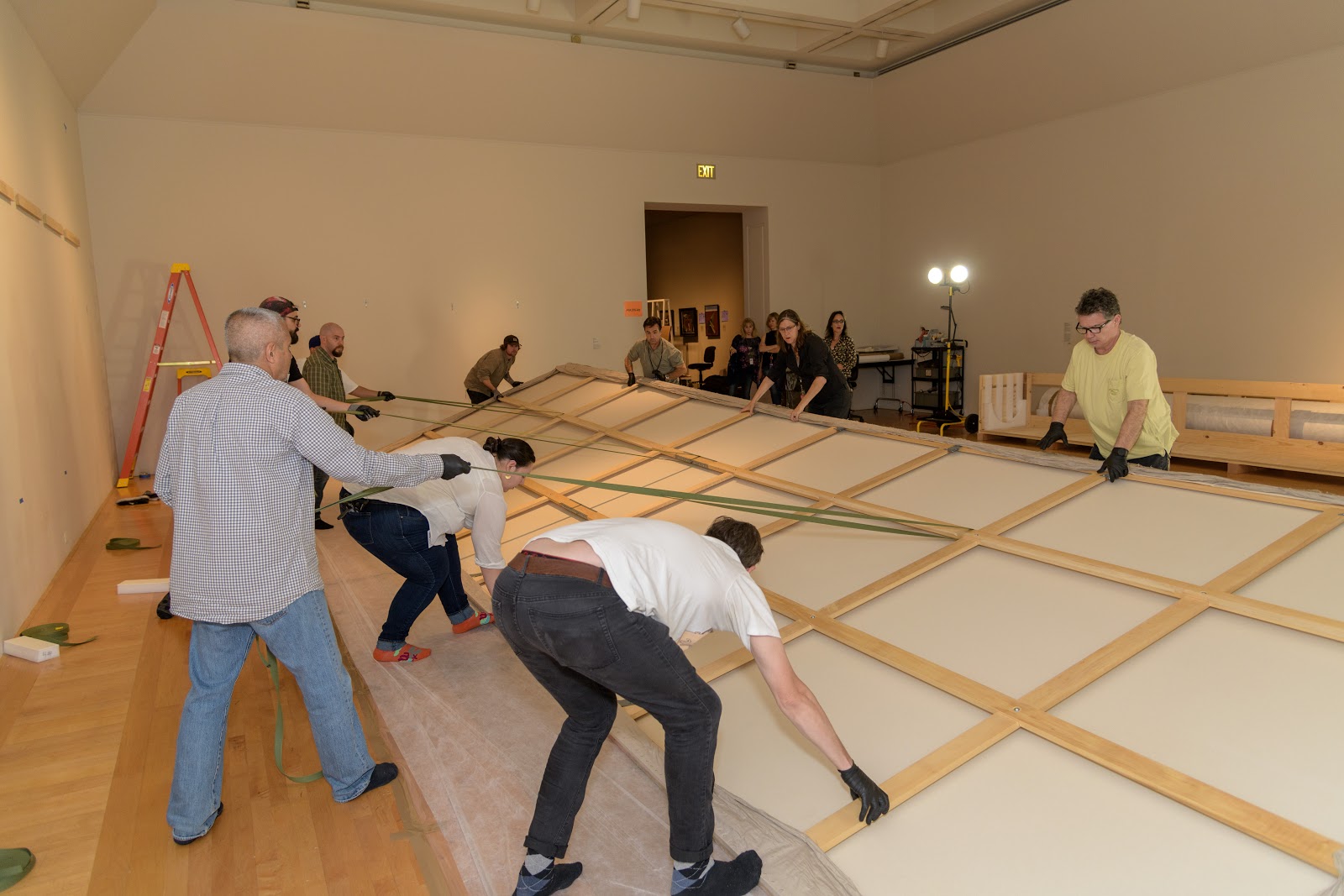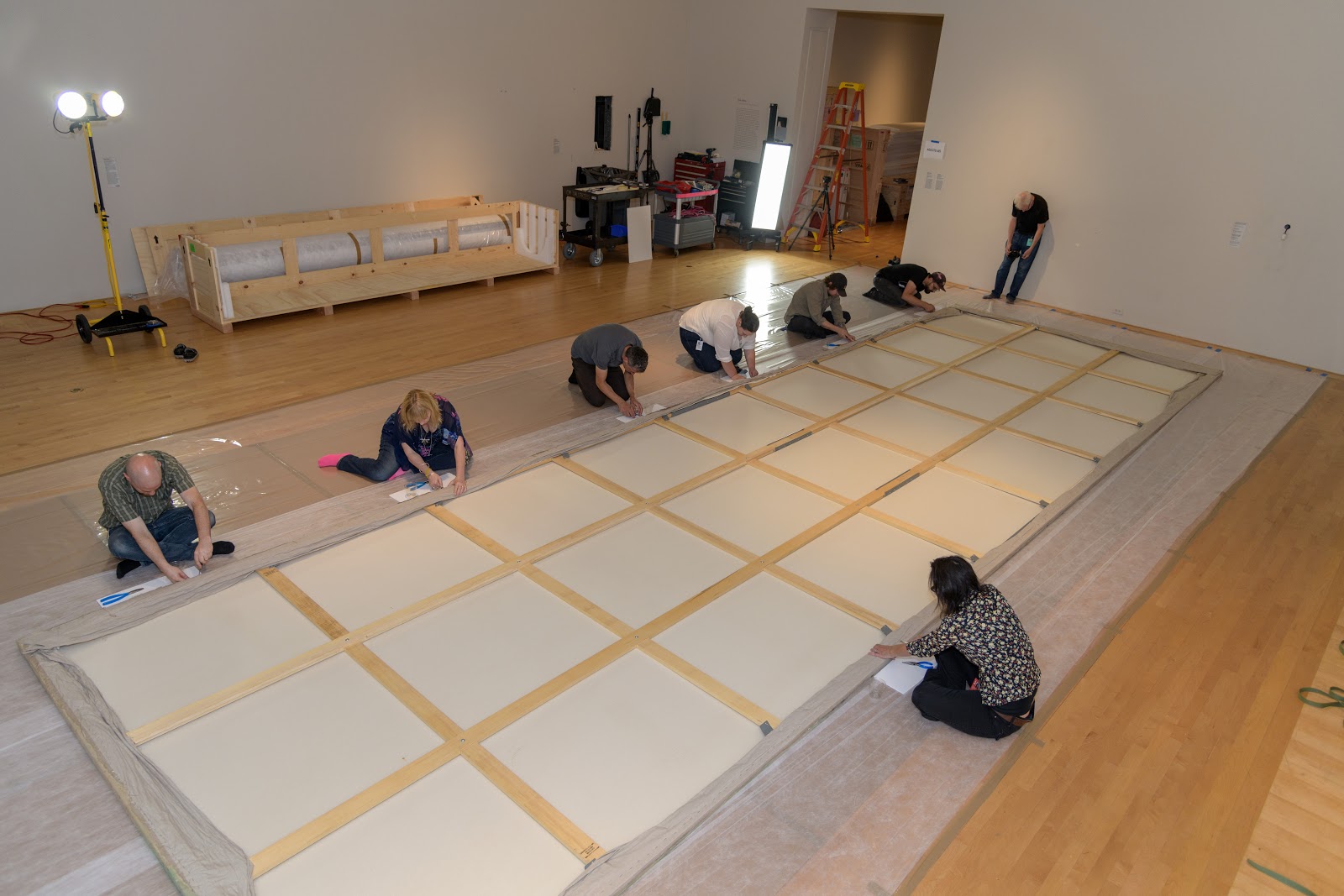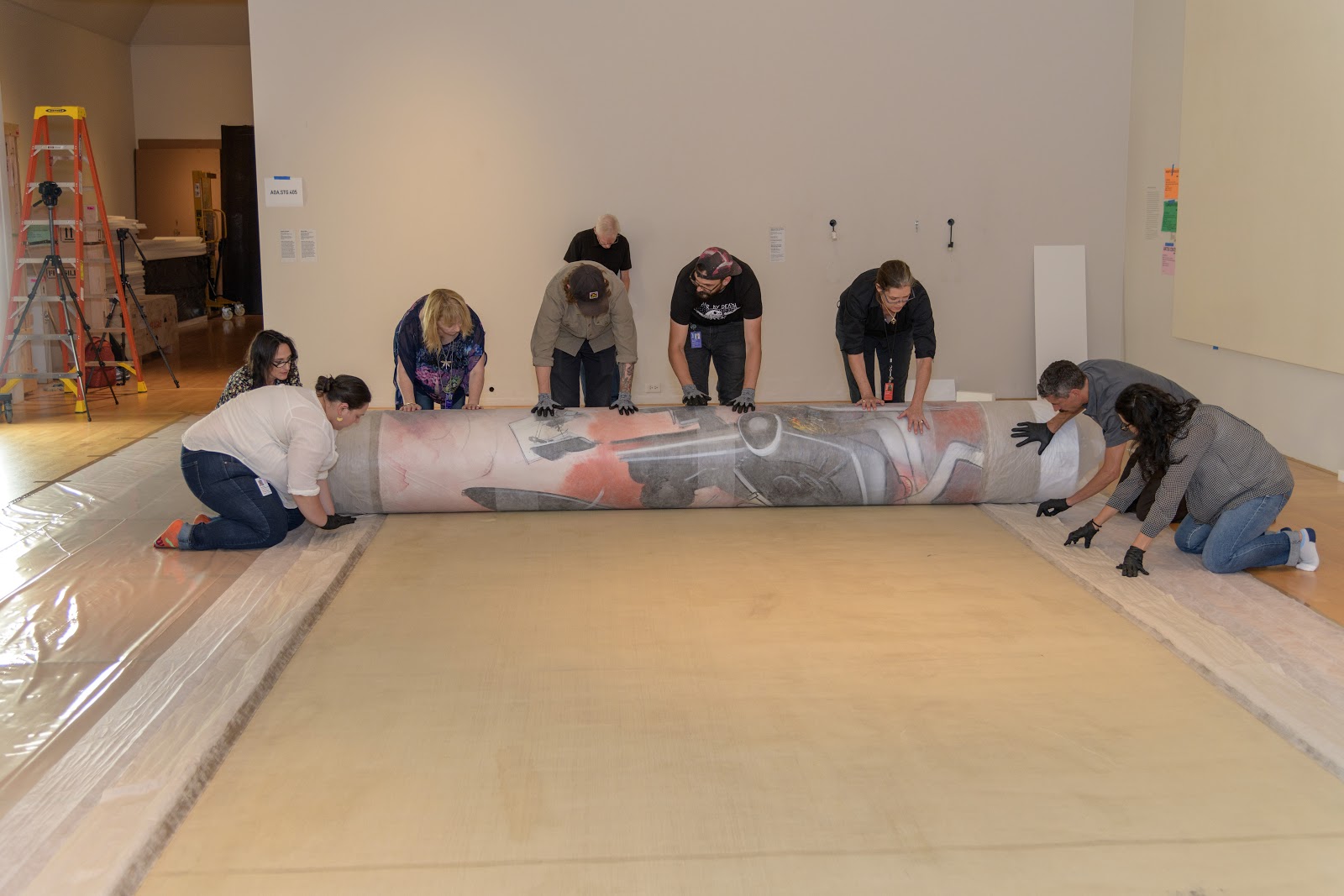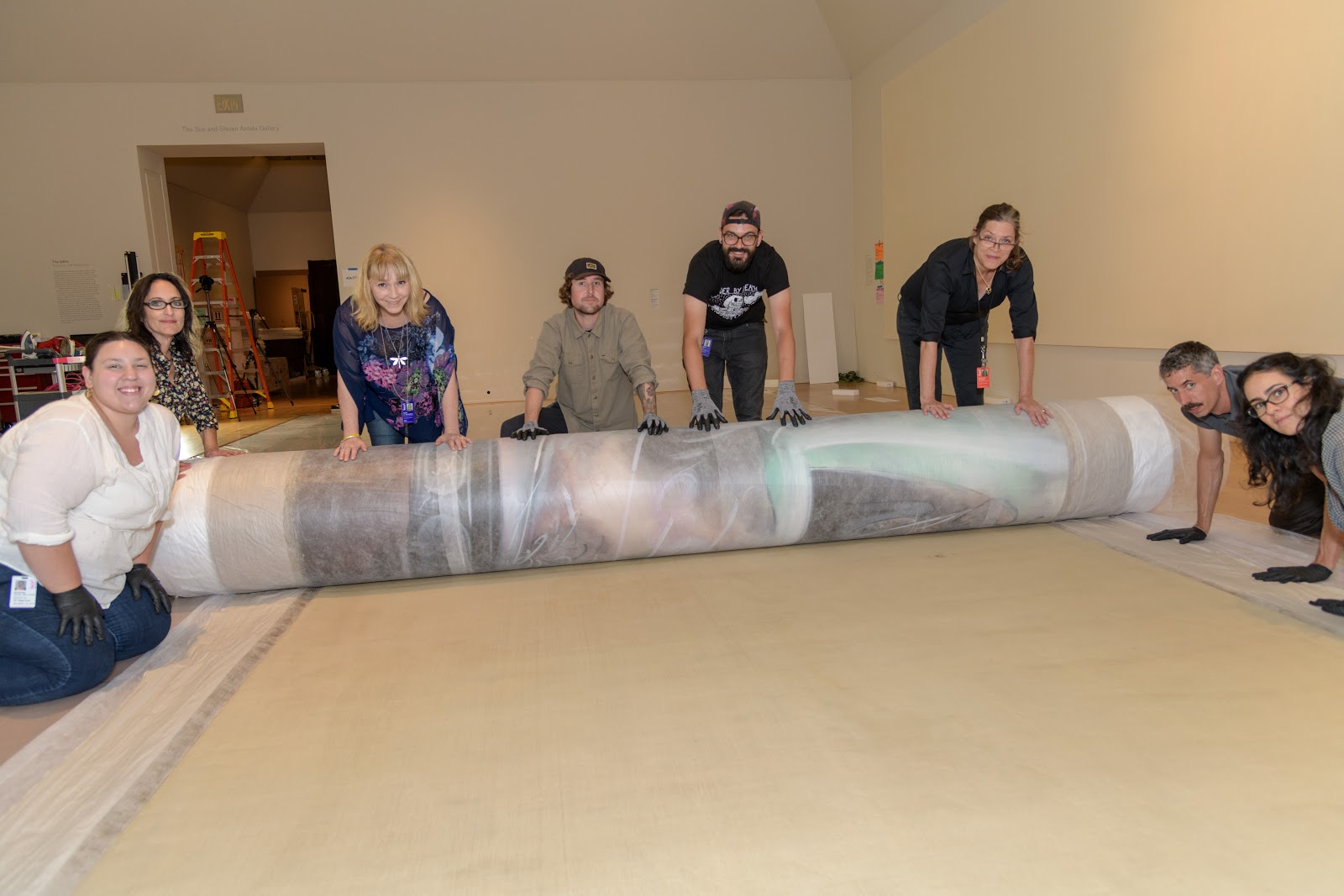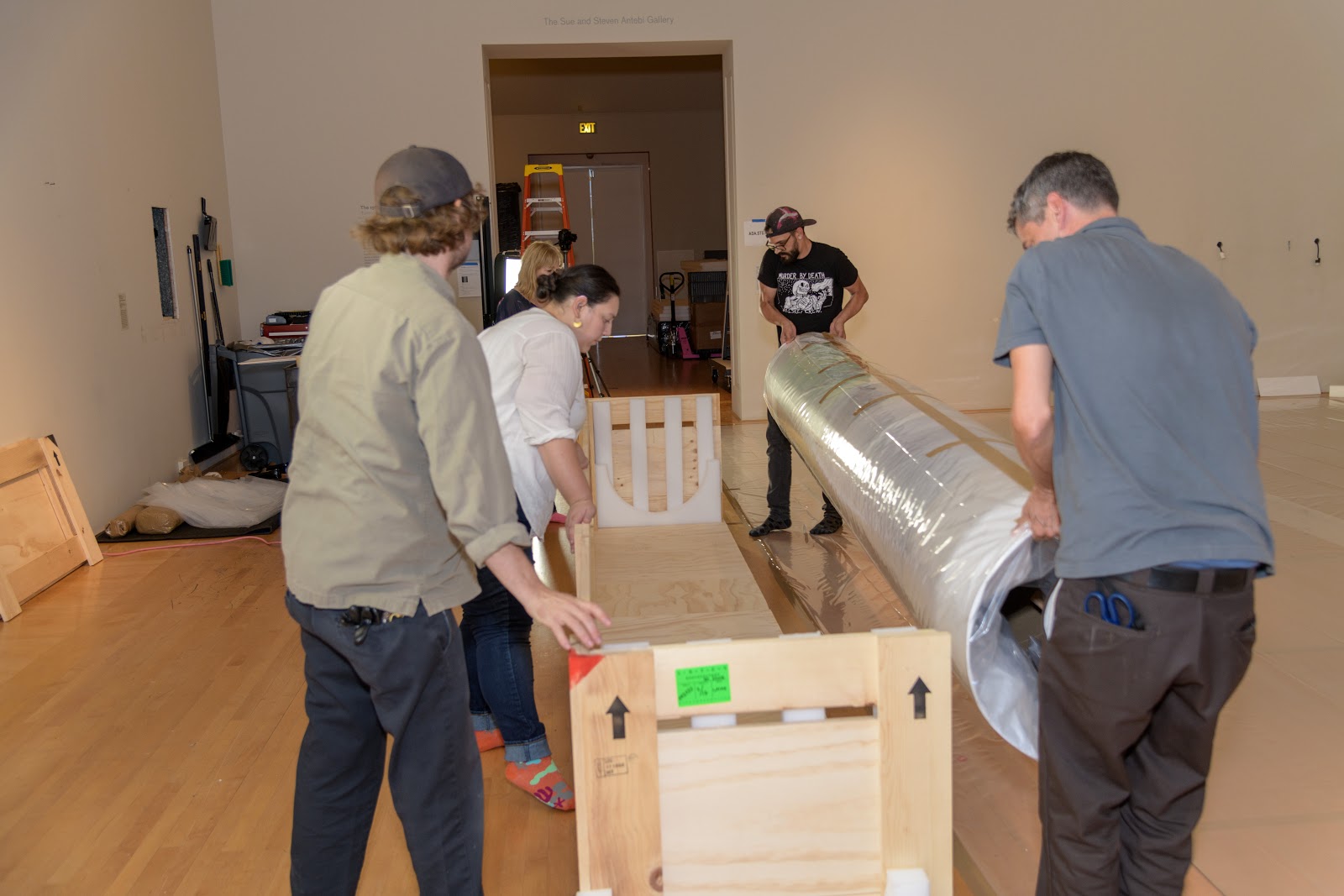In August, we introduced you to PACMA, the team of art professionals working busily behind the scenes to inventory and prepare the permanent collection for relocation, prior to the construction of the new building for the permanent collection on LACMA’s East Campus. (LACMA will remain open during the construction period, with the west side of campus—BCAM and Resnick Pavilion—hosting exhibitions, public programs, and more.) Galleries have been closing in gradual phases since July 2017 so that we can pack artworks to be move-ready. Leading this effort is the PACMA gallery team, a subset of PACMA. The team comprises four expert art handler/packers (collection management technicians) and two art registrars.
The PACMA gallery team has deinstalled and custom packed over 1,500 artworks including paintings, textiles, sculptures, and decorative objects. While many artworks are manageable for a team of four to handle, we have identified approximately 70 objects in the permanent collection galleries that require greater attention and more handlers to deinstall and pack. One such work is the very large painting, Burn, Baby Burn (L’escalade) by Matta (Roberto Sebastián Antonio Matta Echaurren). You may recall seeing this monumental piece on display in the Latin American Art galleries in the Art of the Americas Building, Level 4.
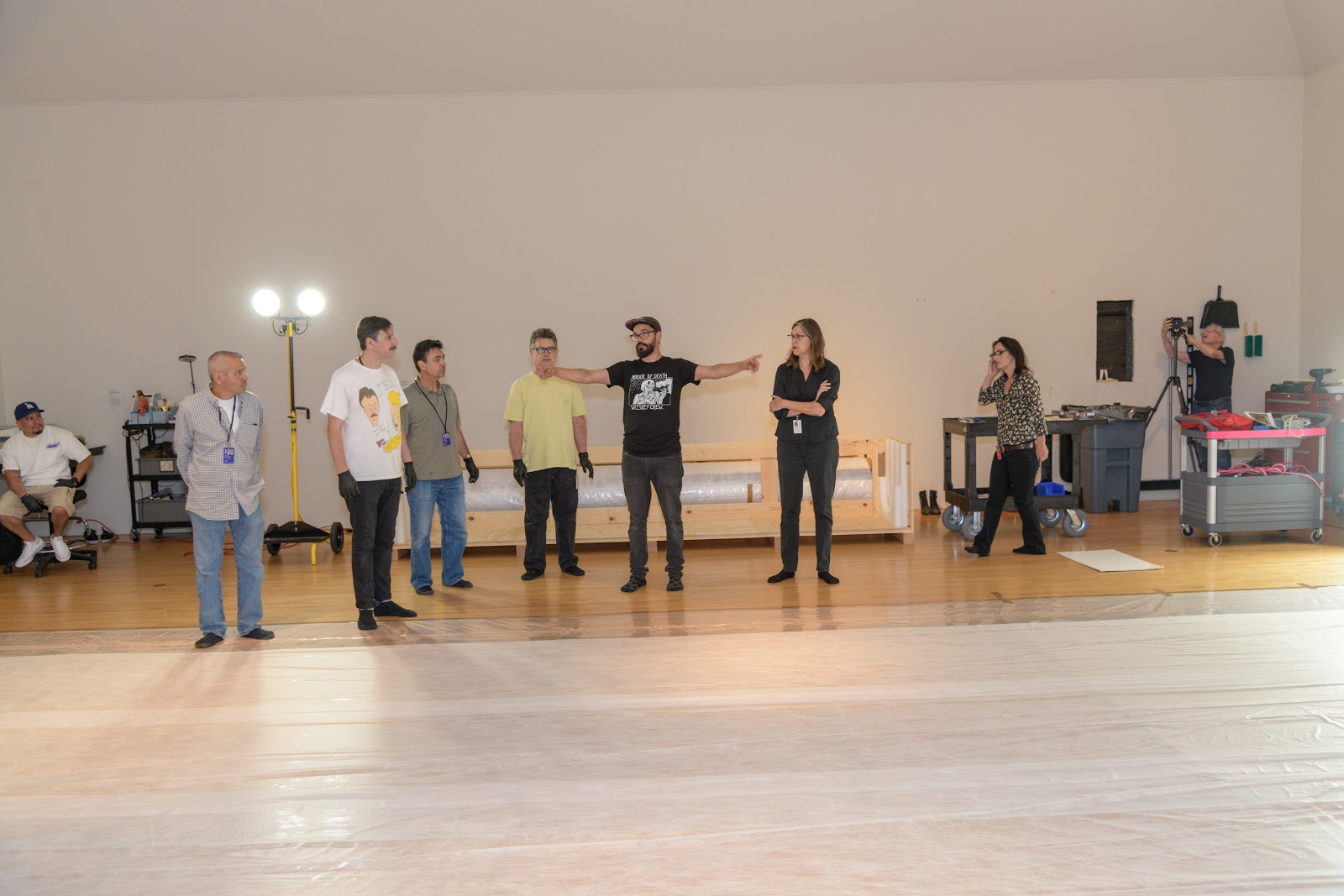
Burn, Baby Burn (L’escalade) measures almost 10 feet tall and over 32 feet long. Stretched, it is simply too large to be crated and moved through the doorways and elevators of the Art of the Americas Building. In fact, the canvas was stretched in the galleries prior to installation and would need to be removed from its stretcher and rolled to pack it for the move. As a registrar, my role is to research the history of the piece as it relates to prior installations, condition issues, and curatorial concerns. I project manage the activity and consult with relevant parties within the museum, including the painting conservators and our collections management technicians. Together we come up with a plan for the deinstall. This includes determining which people should be present, how many art handlers we will need, and what materials to order and prepare for the deinstall.
One thing that we learned from our research and conversations with LACMA’s conservators is that the Matta painting had been strip-lined to enlarge the surface area of the canvas. By adhering gray linen with Beva 371 film to the back edges of the canvas, the conservators made it possible to show the entire painting without losing any of the image over the sides of the stretcher. According to Elma O’Donoghue, associate conservator for paintings, “the strip lining also reinforced the turnover edges of the painting and repaired tears that existed along the edges.” We also learned that the stretcher itself was covered with a muslin fabric. This technique is referred to as a loose-lining and is done to support the painting canvas and to prevent cracks in the paint which can result when the canvas comes in direct contact with stretcher bars.
Knowing more about previous conservation treatments informed our plan for the deinstall and packing process. We made certain to have enough conservators on hand in case the strip-lining became detached and needed to be re-adhered at any point. Elma and her team arranged to bring in two contract conservators, Susanne Friend and Alyson Souza, for the deinstall. Susi and Alyson had attached the strip-lining and stretched this piece in the past.
The PACMA gallery team prepared for the Matta painting deinstall by designing and ordering a custom crate for the rolled painting. Inside of the crate is a Sonotube onto which the painting would be rolled. The 20” tube would be lined with Tyvec, a commonly used archival material that is strong, smooth, non-buffered, and resistant to chemical aging. Next, the gallery team deinstalled and packed all of the other artworks that had previously been on view in the same gallery to create the space on the floor to safely lay the painting down on its face.
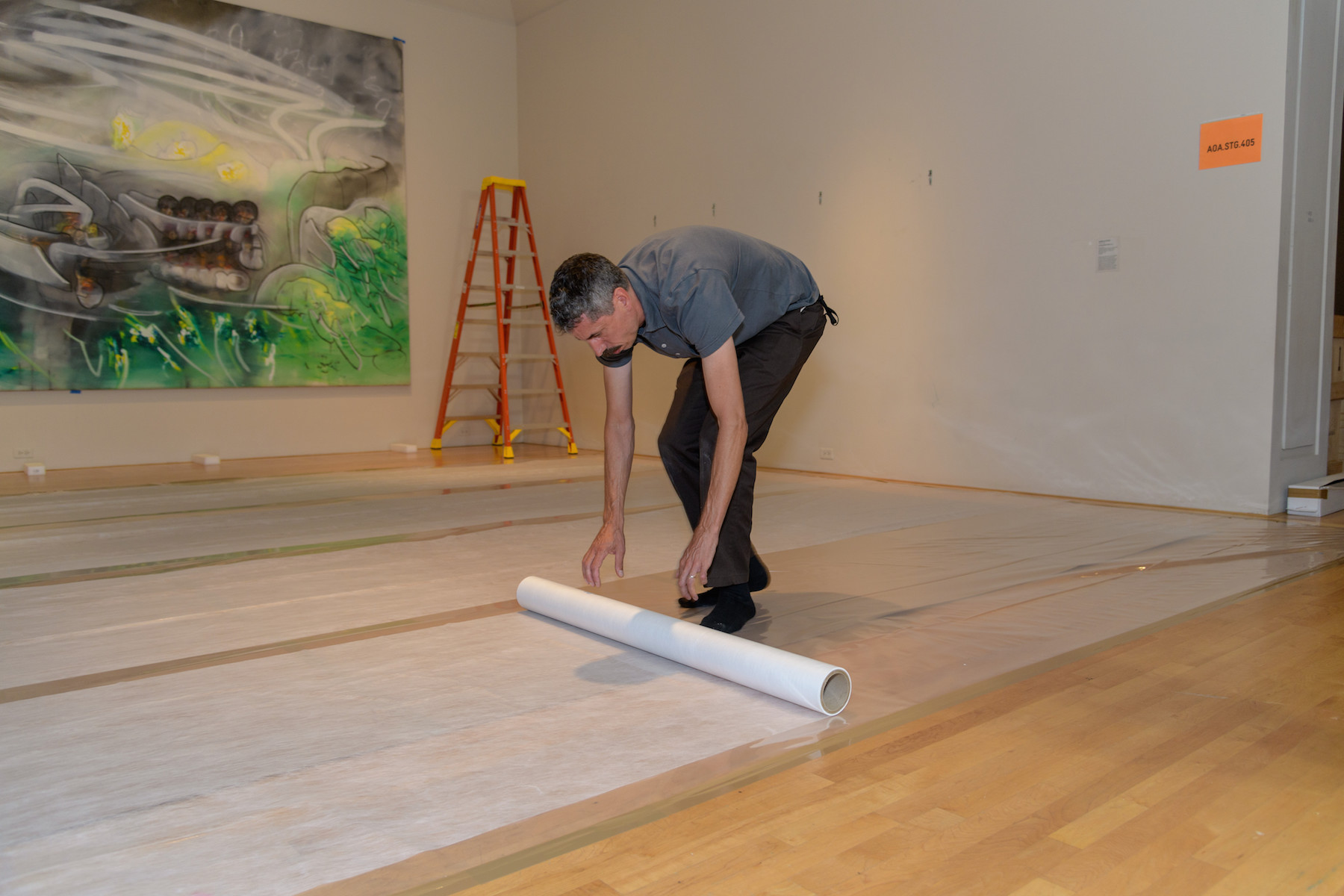
The PACMA gallery team lined the gallery floor with large sheets of cardboard and covered the cardboard with a thin sheet of clean plastic. On top of that went a lining of a special archival material called Hollytex, selected because it is smooth, strong, and would not stick to the paint. It would also serve as the interleaving material rolled between layers of the canvas.
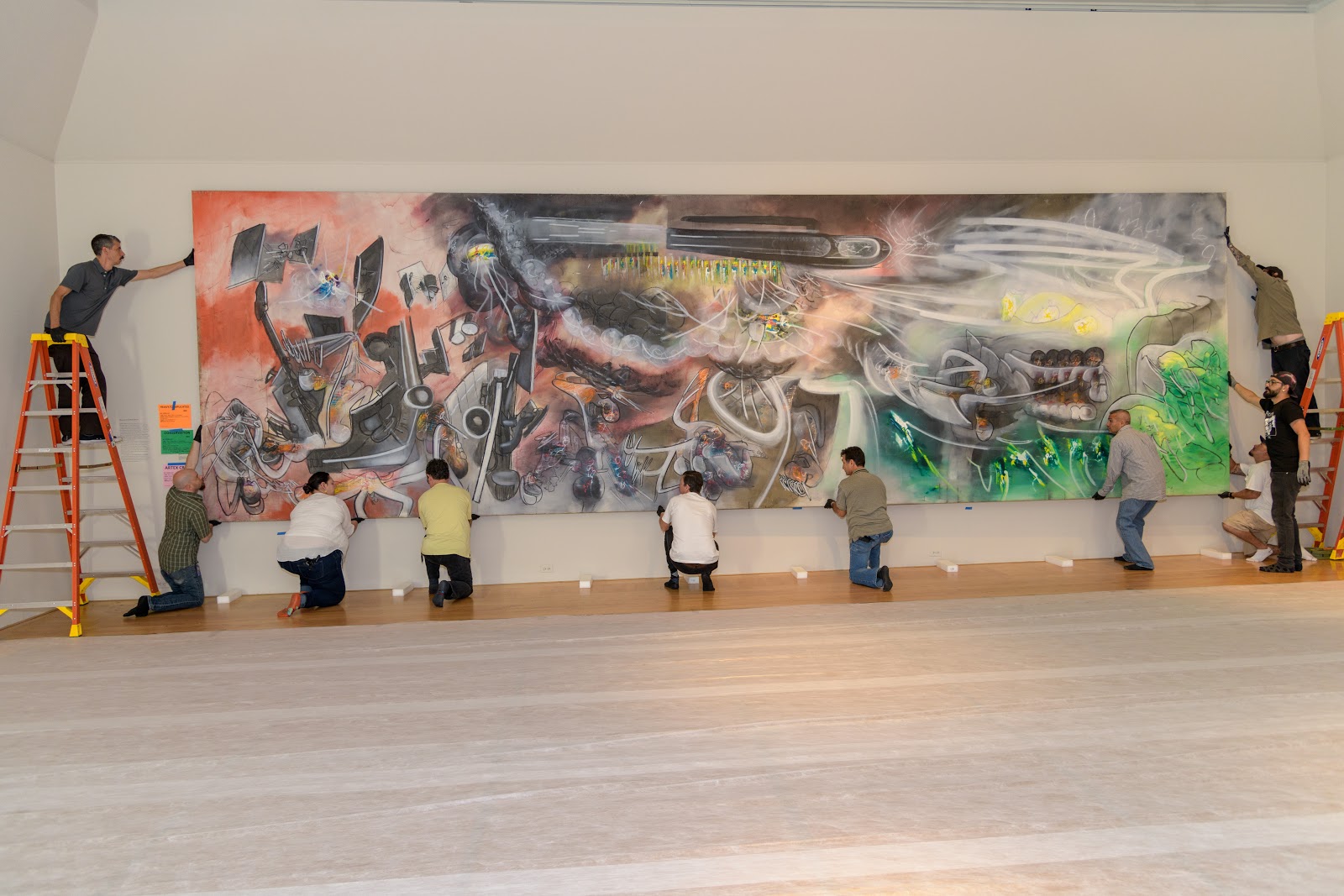
We gathered nine art handlers to lift the painting off of the wall and place it on foam blocks.
Cotton straps were then looped through the back stretcher bars so that the painting could be carefully lowered, face-down onto the Hollytex-lined gallery floor. No shoes allowed!
Under the direction of the painting conservators, PACMA staff removed the staples that were used to attach the canvas to the lined stretcher.
After the staples were removed, the painting was carefully separated from the lined stretcher. The stretcher was re-hung on the wall. It will be folded and packed into a custom travel frame at a later date.
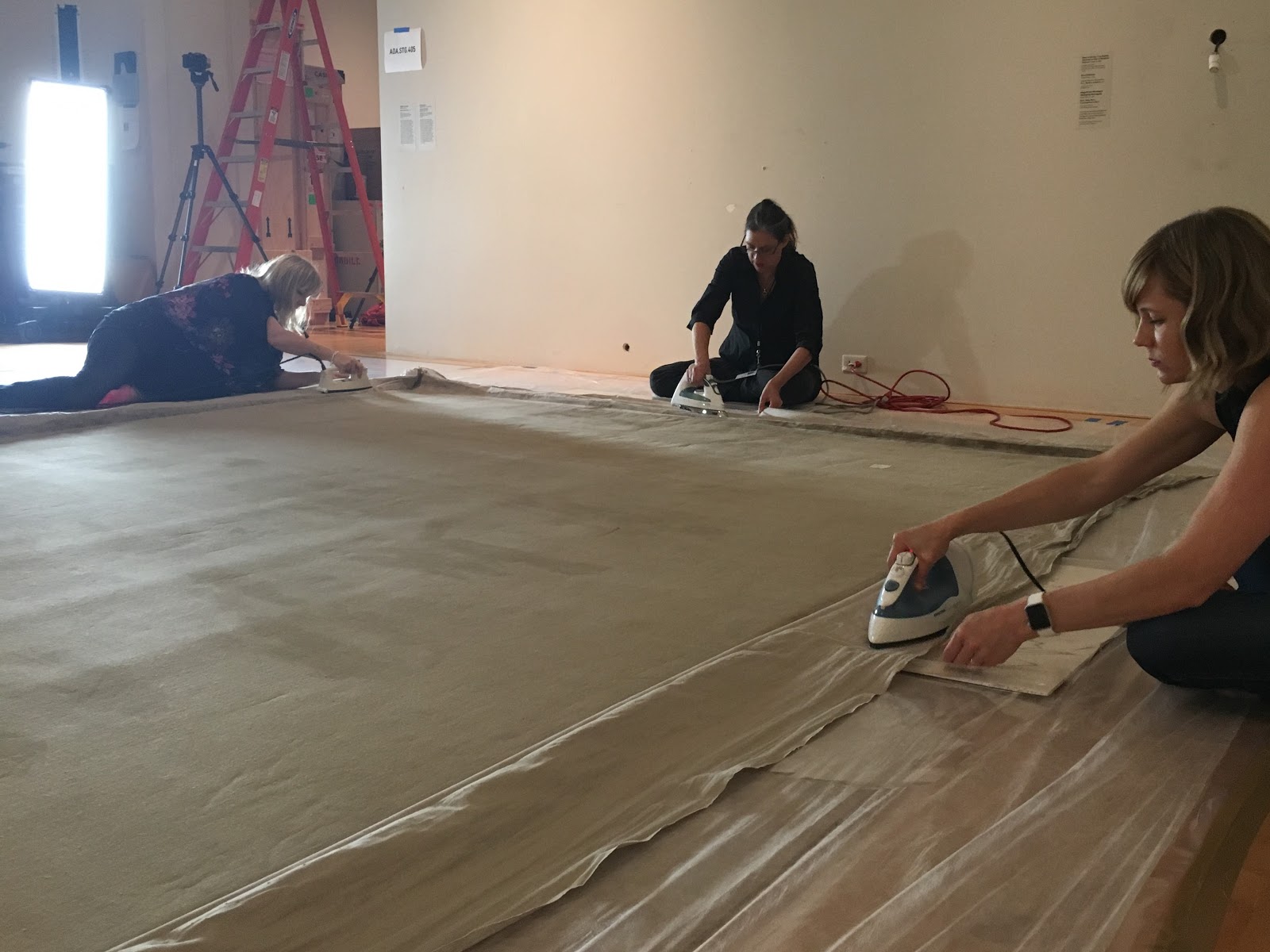
Next we ironed the heavily wrinkled strip-lining so that it would roll smoothly on the tube.
We then placed the Sonotube at one side of the painting canvas and began slowly and carefully rolling the canvas, using the Hollytex as interleaving. It was critical to make sure that the rolled material stayed smooth to avoid creases which could lead to cracks in the paint. The group also rolled at a consistent speed to keep it tracking in a straight line.
The rolled canvas was then covered in clean plastic sheeting which was smoothly taped into place. The Sonotube was placed into the custom slat crate which will be its home until it is re-stretched and installed again in the future.
High-fives all around: one more complex deinstall to check off the list, and one step closer to a move-ready permanent collection.
Special thanks to LACMA photographer Jonathan Urban for the photos and to registration administrator Biaani Carillo-Munoz for sharing her deinstallation notes.




